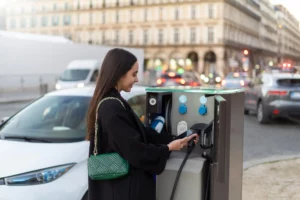
Home / EV Charging News / Optimal Amp Settings for Charging Your Car Battery
Charging your car battery efficiently is crucial for maintaining its longevity and ensuring your vehicle is ready when you need it. Understanding the optimal amp settings for charging your car battery can prevent overcharging, extend battery life, and save you from potential headaches down the road. This article will guide you through the essentials of setting the correct amperage for your car battery, ensuring safe and effective charging.
Before diving into the optimal amp settings, it’s essential to have a basic understanding of how car battery charging works. A car battery stores electrical energy in chemical form, which is converted to power your vehicle’s engine and electrical systems. Over time, the battery loses its charge and needs to be replenished, typically through the alternator while driving or by using an external battery charger.
Amps, short for amperes, measure the current flow in an electrical circuit. When it comes to charging a car battery, the amperage determines how quickly the battery will charge. Higher amps charge the battery faster, while lower amps provide a slower, more gradual charge. Choosing the right amperage is crucial to avoid damaging your battery or reducing its lifespan.
Selecting the appropriate charger for your car battery is just as important as setting the correct amperage. Modern battery chargers often come with adjustable amp settings and smart technology that automatically adjusts the charging rate based on the battery’s condition. Look for chargers with built-in safety features like automatic shutoff to prevent overcharging and battery damage.
Understanding the optimal amp settings for charging your car battery is essential for maintaining its health and ensuring reliable performance. Whether you opt for slow, medium, or fast charging, it’s important to consider your battery’s condition and your immediate needs. By choosing the right amp setting and using a quality charger, you can extend your battery’s lifespan and keep your vehicle running smoothly.
